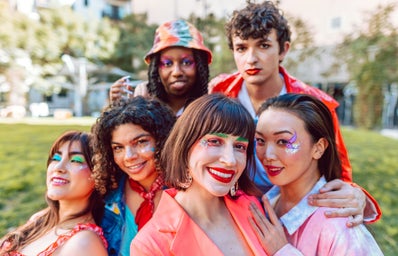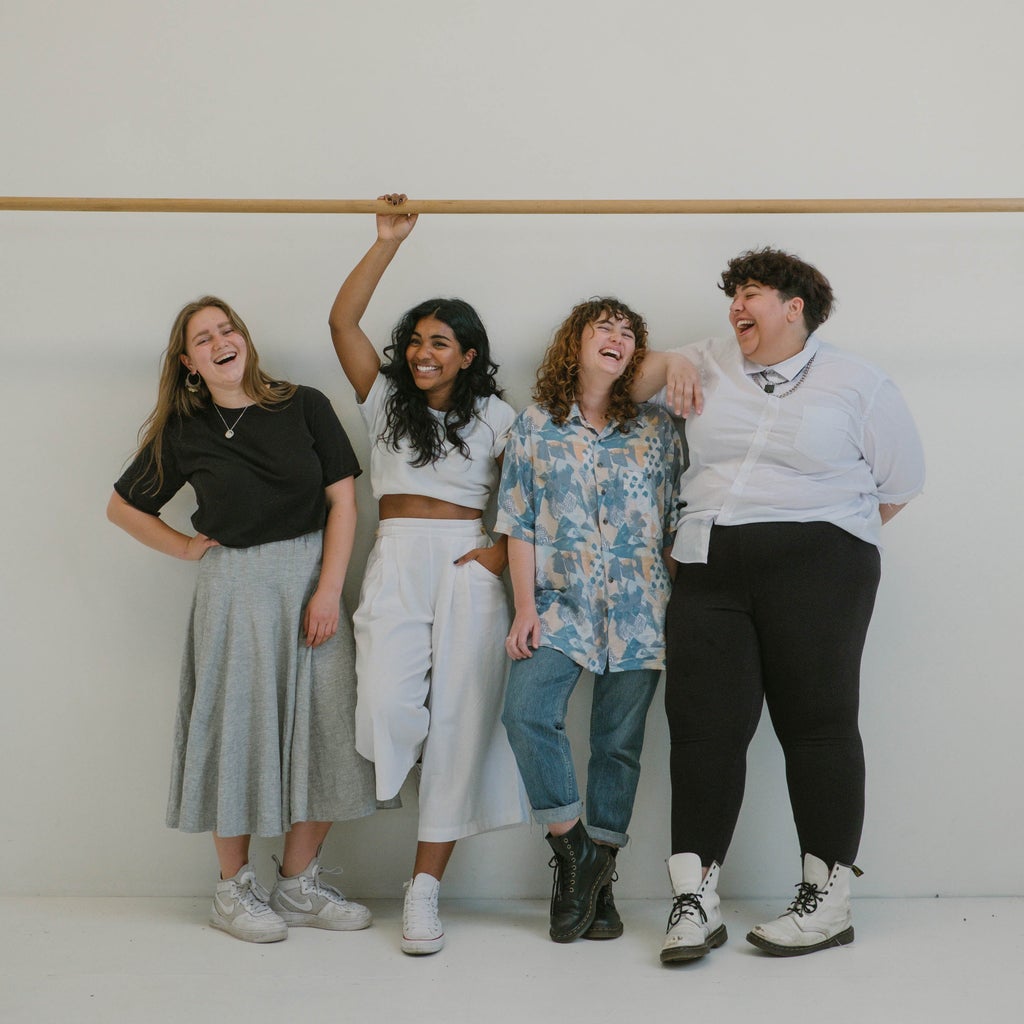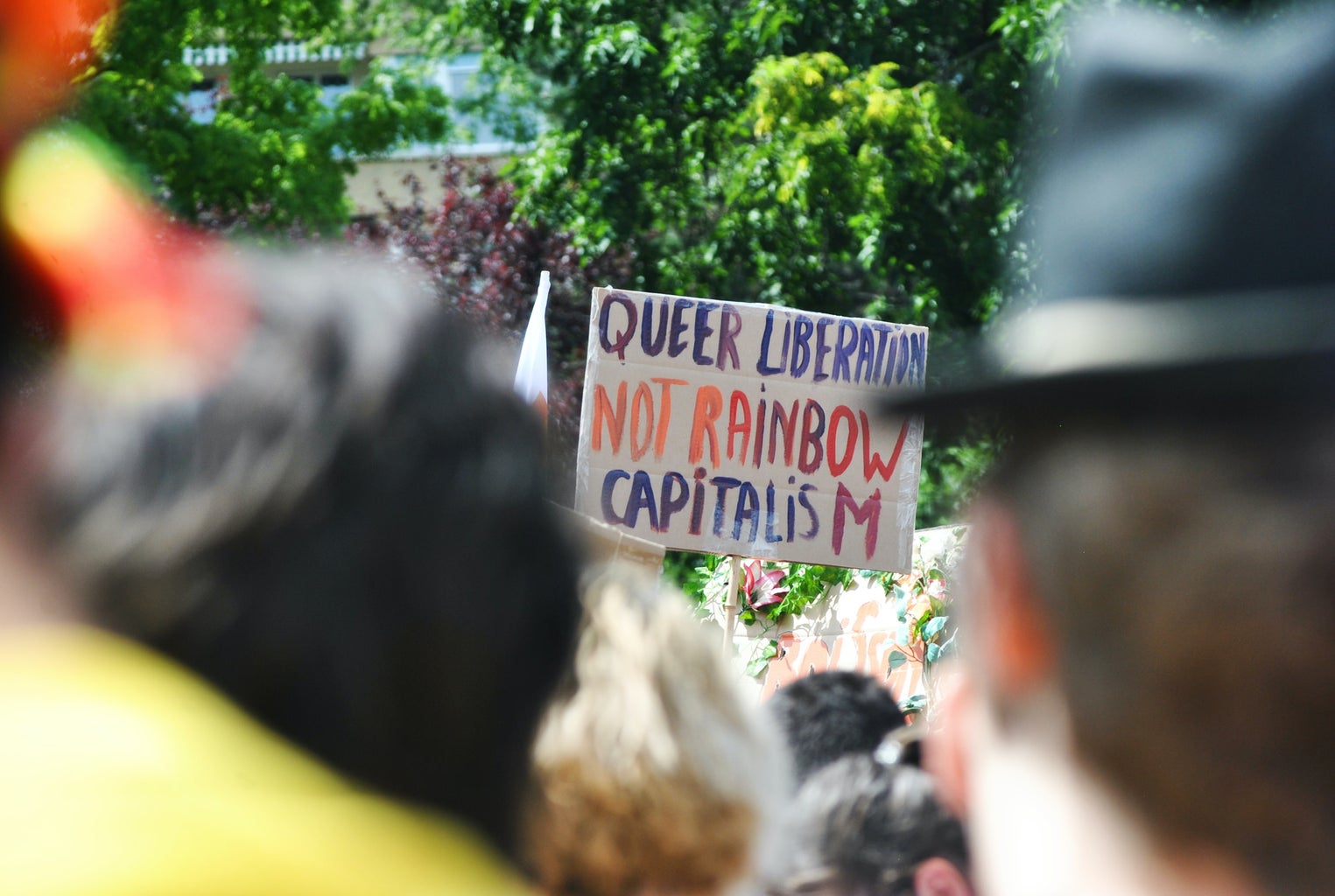In her book titled Pleasure Activism, writer and activist adrienne maree brown describes “love as political resistance.” Drawing from Audre Lorde and Octavia Butler, she describes the importance of overcoming societal norms surrounding love, which emphasize heteropatriarchy, individualism, and the need to have an income to express love to others. Instead, she describes practicing love in ways that help heal past traumas, that include community supported self-care, and that exist outside of political and social expectations, as forms of rebellion.
Viewing joy and love during Pride Month as acts of resistance is not difficult. Same-sex marriage in the United States was not legalized across the country until 2015. This ruling continues to be attacked through homophobia and discrimination based on sexuality. Transgender and gender non-conforming people still face high rates of violence and lack rights throughout the country. Black people in the queer community face both racism and disproportionate discrimination, even from within the queer community. People who are asexual or intersex also continue to experience negative effects of misinformation or ignorance, since they often lack representation in widespread culture. By existing, loving, and feeling joy in the face of hate and discrimination that targets LGBTQIA+ people, we are resisting societal barriers that are meant to prevent us from existing.
So, what can radical love and joy during Pride Month look like? For LGBTQIA+ people, it means taking care of yourself and creating communities of mutual support. It means taking up spaces where we historically have not been welcome. Most people I know within the queer community have experienced some form of harm based on their identity. By acknowledging these traumas, and working to heal from them, we can create a type of joy and love that so many aspects of society work to take away from us.
However, it is also important to allow space for those who live in communities where it is not safe to come out, or people who are still figuring out where they are on the spectrums of gender and sexuality. Even if LGBTQIA+ people do not or cannot outwardly express their identities in public, they are still valid, and still worth celebrating. Before I came out as bisexual, I felt a lot of pressure during Pride Month, and it made me feel distant from the community, or like I did not belong. However, increased representation and discussions about the validity of different identities helped me overcome internalized biases I held and eventually helped me begin to come out later on my own terms.
Historically, people in the LGBTQIA+ community have celebrated love and resistance in many ways. Pride Month is held in June to honor the Stonewall Uprisings that occurred in 1969, in response to police raids of gay bars. A year after the uprisings, the first U.S. Pride march (then called the Christopher Street Liberation Day March) took place. While Pride celebrations have continued to expand and become more widespread today, it is important to note that the “rainbow-washing,” or empty promises of large corporations who plaster rainbows on their products and logos during Pride Month, actively hurts LGBTQIA+ communities. It allows companies to profit off of feigning support for LGBTQIA+ communities while continuing to support discriminatory political agendas. This type of corporate commodification attempts to twist the celebration of Pride into a market, and directly opposes efforts to practice love and joy as a catalyst for change.
A true celebration of LGBTQIA+ pride comes from our communities. It comes from our existence and our love for one another. It comes from uplifting our voices, especially those who experience disproportionate discrimination and violence. It comes from representing all LGBTQIA+ people in our media. Through this, we can create better conditions and continue to heal.




